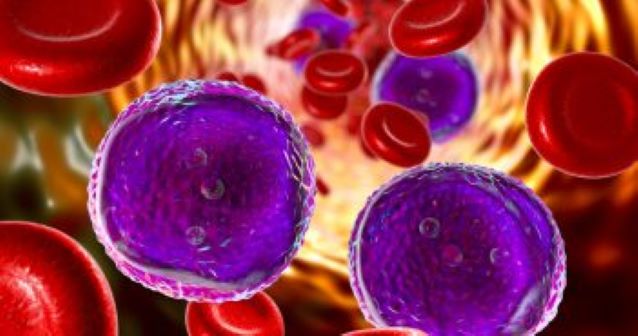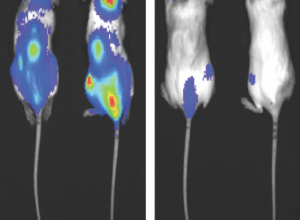|
February 2021 IDENTIFYING THERAPEUTIC TARGETS FOR B-CELL ACUTE LYMPHOBLASTIC LEUKEMIAFeaturing: John Crispino, PhD
Northwestern Medicine investigators have identified a protein kinase called DYRK1A and its downstream substrates as potential therapeutic targets for B-cell acute lymphoblastic leukemia, according to findings published in The Journal of Clinical Investigation. “The goal was to identify new potential therapeutic targets for this disease, in particular for kids with higher risk cases,” said John Crispino, PhD, adjunct professor of Medicine in the Division of Hematology and Oncology, director of the Division of Experimental Hematology at St. Jude Research Hospital and senior author of the study. B-cell acute lymphoblastic leukemia (B-ALL) is the most commonly diagnosed childhood cancer and recent developments in multi-drug treatments for B-ALL have increased the overall five-year event free survival rates to more than 85 percent. However, factors such as molecular subtype and age can be associated with a worse prognosis for patients. Specifically, children diagnosed with Down syndrome have a higher risk of developing B-ALL compared to children without Down syndrome due to increased expression of a serine/threonine kinase called DYRK1A, which is encoded on chromosome 21 and regulates early stages of the cell cycle. “In children with Down syndrome diagnosed with ALL, we tend to see a much higher rate of chemotherapy-related toxicities, which really limits dose escalation and the children that essentially are getting lower doses of chemo thus have worse outcomes,” said Rahul Bhansali, MD, a former Howard Hughes Medical Institute Medical Research Fellow in the Crispino laboratory and co-first author of the study. Previous work has characterized the role of the gene DYRK1A as an essential player in the development of neurological diseases such as autism and Alzheimer’s disease. Recent work from Crispino’s laboratory also found DYRK1A plays a key role in promoting other types of leukemia, but its role in specifically promoting B-ALL pathogenesis has remained unknown. Using phosphoproteomics to study B-ALL cell lines and patient-derived B-ALL cells, the investigators found that DYRK1A is overexpressed and, more importantly, necessary for the growth of all B-ALL cells. Downstream targets of the protein kinase DYRK1A, such FOXO1 and STAT3 —transcription factors essential for B-cell development — were identified as potential therapeutic targets in addition to DYRK1A itself. “DYRK1A and its downstream substrates hold great therapeutic potential in the treatment of B-ALL,” said Malini Rammohan, ’20 PhD, a former student in the Driskill Graduate Program in Life Sciences (DGP) program and co-first author of the study. Next, in B-ALL cell lines and patient-derived B-cells, the team used a small-molecule inhibitor of DYRK1A called EHT 1610 and found that it suppressed DYRK1A activity in vitro and in vivo, ultimately decreasing the total number of B-ALL cells. Additionally, the scientists investigated how well EHT 1610 worked alongside conventional B-ALL chemotherapy drugs, specifically cytotoxic anti-cancer agents, in suppressing B-cell growth. While these agents target leukemic cell cycle and proliferation, they can become ineffective over time due to increased cell resistance. The team treated the B-ALL cell lines with EHT 1610 in combination with commonly used B-ALL chemotherapy drugs —cytarabine and methotrexate — administered along with dexamethasone and found that all three agents synergized with EHT 1610 in the cell lines. “Most B-cell leukemia trials these days are combining targeted therapy with conventional chemotherapy regimens, and we show that this could improve sensitivity of leukemic cells to chemotherapy,” Bhansali said. “In patients with Down syndrome, this could allow for better responses to lower doses of cytotoxic chemotherapy, but our results demonstrate that this may be may work in patients without Down syndrome, as well.” This work was supported by The National Institutes of Health grant CA101774, the Rally Foundation and the Moore family. This article was originally published in the Feinberg School of Medicine News Center on February 18, 2021. |
John Crispino, PhD, adjunct professor of Medicine in the Division of Hematology and Oncology and director of the Division of Experimental Hematology at St. Jude Research Hospital, was senior author of the study published in the Journal of Clinical Investigation.
Malini Rammohan, ’20 PhD, a former student in the Driskill Graduate Program in Life Sciences program and co-first author of the study.
Rahul Bhansali, MD, a former Howard Hughes Medical Institute Medical Research Fellow in the Crispino laboratory and co-first author of the study.
Refer a PatientNorthwestern Medicine welcomes the opportunity to partner with you in caring for your patients.
|
You May Also Like
|
January 2021 |
February 2021 |








